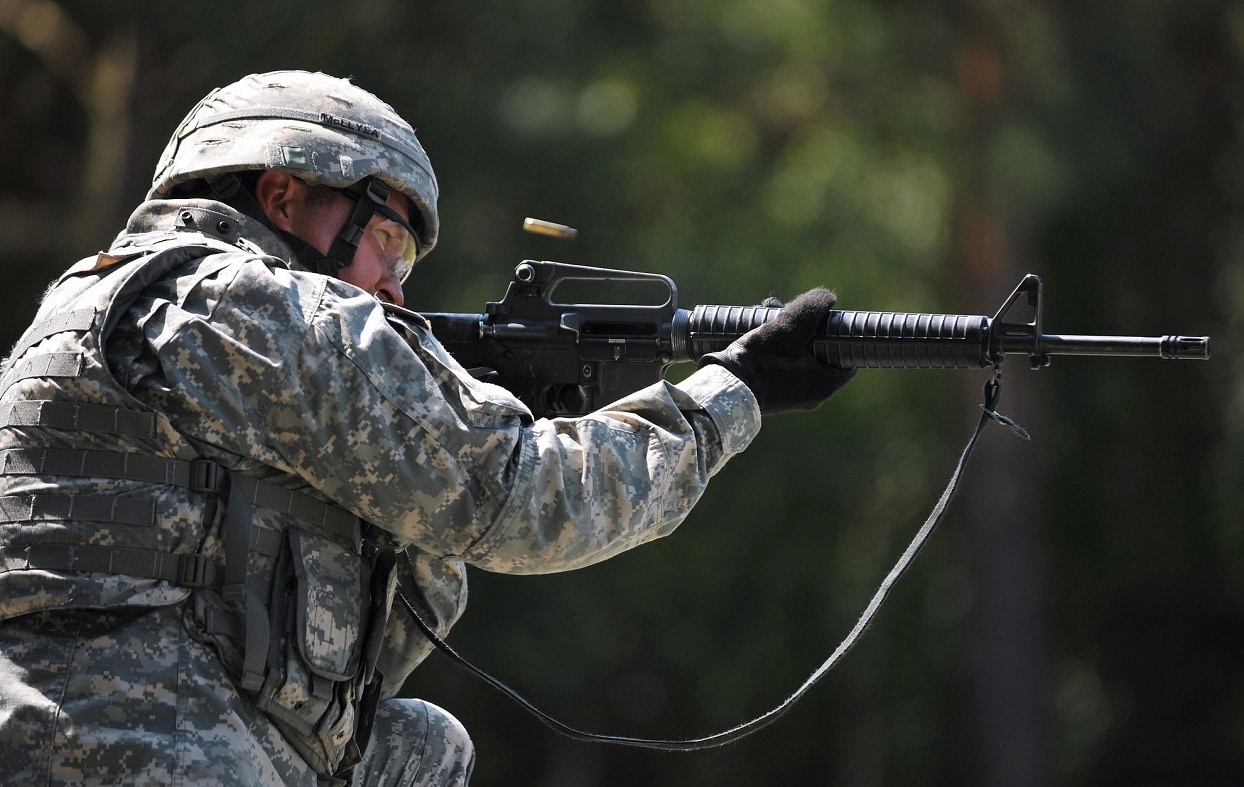It is becoming increasingly common today for many young people to never learn to drive. With Uber and Lift as options, many younger millennials and those in “Generation Z” are opting to let someone else do the driving. While it could be seen as a problem for the military if the young crowd doesn’t know how to drive, apparently the U.S. Army has that covered.
Earlier this year, U.S. Army Soldiers integrated a Robotic Combat Vehicle (RCV) surrogate into the opposing force during a recent rotation at the Joint Readiness Training Center at Fort Polk, Louisiana. This event, which took place in September, enabled the Army to gain valuable insight into how best to utilize robotic vehicles in combat and furthered its ongoing Campaign of Learning around RCV development.
According to the Army, soldiers from the 1st Battalion (Airborne), 509th Infantry “Geronimo,” used two Project Origin vehicles (RCV surrogates) in a simulated battle with the 3/101st (Air Assault). The Origin vehicles were part of Army Development Command (DEVCOM) Ground Vehicle Systems Center (GVSC) prototyping effort to provide the service with the ability to conduct rapid technology and autonomous behavior integration that soldiers assess during multiple touchpoints each year.
The exercise essentially involved self-driving cars/autonomous vehicles – but of the military variety, of course, specifically eight-wheeled robotic vehicles that were able to take part in often-perilous missions, and relay information back to soldiers in the field.
“With these units, the human survivability rate increases significantly,” explained Sergeant First Class Eugene Lackey (Pathfinder Company). “This system allowed us to close with and destroy the enemy safely from a distance. It [also enabled] us to the find the enemy before he could find us. It is a great tool and I wish we could have it for little bit longer to really see how we can change the way wars are fought.”
The feedback obtained by the Geronimo Soldiers was then added to the Army’s library of data on the use of robots in the field.
“Project Origin’s key competency is its ability to collect Soldier feedback and technical data, use this information to rapidly iterate both its software and physical payloads, and evaluate the changes in relevant tactical environments,” explained Todd Willert, Project Origin project manager at GVSC. “The lessons learned during Project Origin experiments directly support the development of the Robotic Combat Vehicle and the Army’s forthcoming Ground Autonomy Software, user interfaces (Warrior Machine Interface), and modular architectures.”
GVSC and the Army’s Next-Generation Combat Vehicles Cross-Functional team, which are both based at the Detroit Arsenal in Michigan, working with the Army Capability Manager-Infantry Brigade Combat Team (ACM-I), based in Georgia, to integrate the Project Origin platforms into the JRTC rotation.
“JRTC stressed the systems to their breaking points, allowing us to identify problems that would undoubtedly arise in the future,” added Major Cory Wallace, RCV lead for NGCV CFT.
It wasn’t just terrain that the robots and soldiers had to deal with, as each had to endure a tropical storm, which further add to the complexity of the exercise. Among the key highlight of the recent exercise, the soldiers also utilized the Project Origin platform to block a key intersection for 36 hours.
That effort benefitted from Origin’s low heat signature, which allowed it to conduct long hours of battery-powered ‘silent watch.’ In addition, Geronimo used the project Origin vehicles to deny helicopter landing zones and even to conduct route reconnaissance. This was in essence a force multiplier as the robots, which were controlled by just four operators and an NCO, enabled other soldiers to be assigned different missions.
“This validated the notion that if we assign the dumb, dirty, dangerous missions to the robots, we can re-assign our Soldiers to the high-priority complex missions and tasks,” Wallace noted.
The Army has additional soldier Touchpoints, with Project Origin and other RCV platforms, which are scheduled to take place throughout 2022 as it prepares to make future decisions on the potential acquisition of RCVs.
Peter Suciu is a Michigan-based writer who has contributed to more than four dozen magazines, newspapers and websites. He regularly writes about military small arms, and is the author of several books on military headgear including A Gallery of Military Headdress, which is available on Amazon.com.

